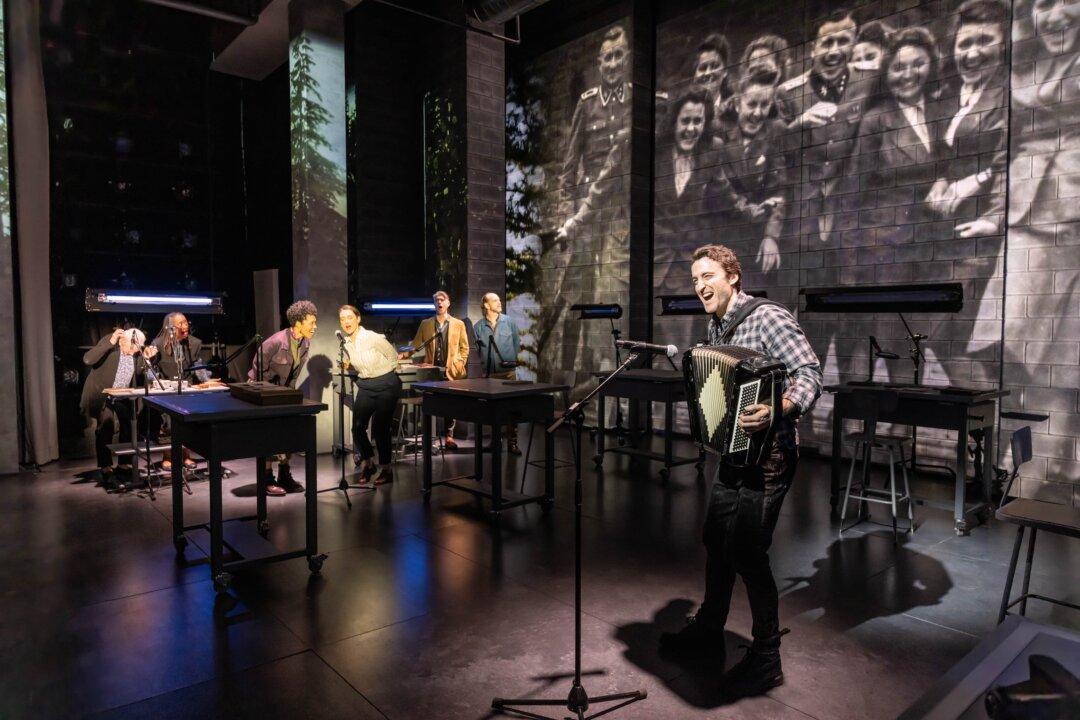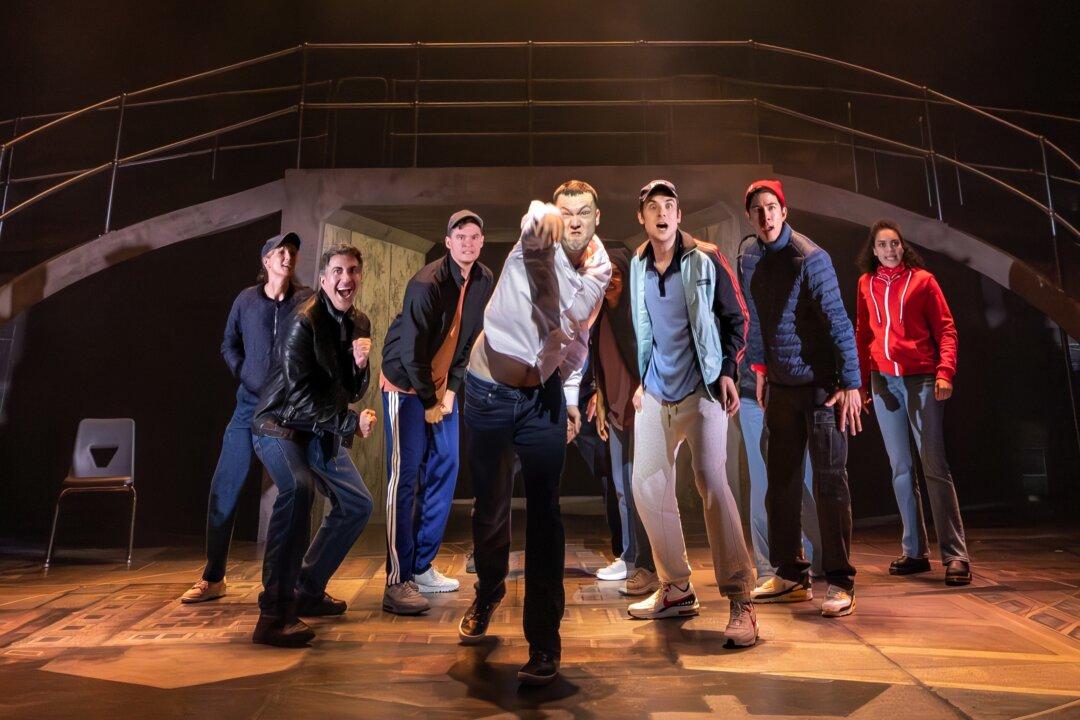NEW YORK—There is great power in a photograph. It illuminates a hitherto unknown corner of the world, provides answers to questions never before asked, and serves as a historical record for all to see. Such is the case in Moisés Kaufman’s and Amanda Gronich’s quietly fascinating and deliberately disturbing “Here There Are Blueberries” at New York Theatre Workshop. A co-production with Tectonic Theater Project that’s based on actual events, the play looks at a time where the ordinary and outright horrific go hand-in-hand.
The story begins at the United States Holocaust Memorial Museum where, in response to a written inquiry, a photo album—purportedly containing images from the concentration camp at Auschwitz—arrives at the desk of archivist Rebecca Erbelding (Elizabeth Stahlmann). Erbelding is initially skeptical of the claim, as few such photos are known to exist. She notes that “the Nazis did not want to leave evidence as to what was going on.” But the album, containing 116 different images on 32 separate pages, turns out to be just that.





